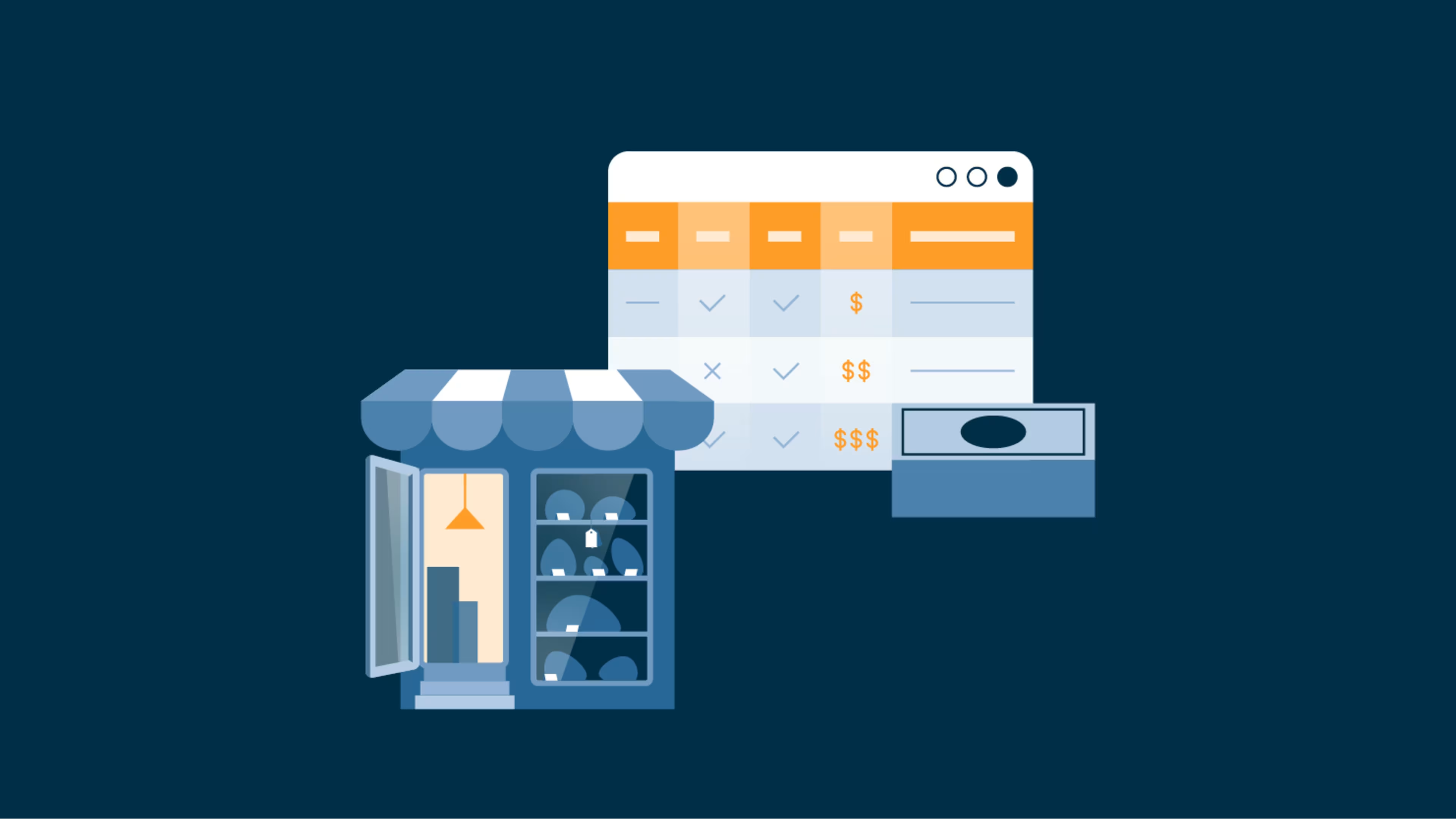Are you a small business owner? Check out these software categories you should invest in.
Are you a small or midsize business? Do software costs make up a large share of your business’ budget and impact its revenue? If yes, then finding the right small business software is crucial for the likes of you.
Small business software helps these businesses run everyday tasks more effectively and efficiently. These tasks may include accounting and bookkeeping, streamlining communication and collaboration, and employee productivity tracking, among others. Focusing on how small businesses need to do more with less, there are quite a few categories wherein the requirements for your small business might fall into including accounting, collaboration, communication, CRM, project management, video interviewing, or webinar.
Let’s dive into a few small business software categories to check out the top-rated products and cover their pricing models.
How is small business software priced?
The cost of small business software depends on various factors such as the business type, size, and industry. The product’s category type, implementation fee, features you choose, customization are some of the other factors.
Below are a few considerations that can help you choose the best software for your small business, which may further help you decide the total cost you may have to pay:
Identifying your business requirements
Viewing demo or trial version
Integration with other tools
Setting a budget
Checking customizations
Training and customer-support options
What type of pricing models are used in small business software?
When it comes to evaluating small business software pricing, you’ll notice three main categories of pricing models: perpetual license, subscription license, and the freemium model.
1. Subscription pricing model: When the vendor hosts the software on their servers (also known as Software-as-a-Service), the company typically pays a monthly or annual subscription fee. This is beneficial for companies that don’t want to host and maintain their data. The standard pricing structure is per user, per month, which is usually based on the number of employees who access the software.
Some subscription plans are pay-as-you-go (no contracts required) and can be canceled anytime, while others may require a contract.
2. Perpetual licensing: With perpetual licensing, the company hosts the data on its own servers, so it only needs to pay for the software upfront. It may also pay a recurring (e.g., annual) cost to the vendor for support or product upgrades. Perpetual licensing may be an attractive option for businesses that are concerned with data security or have complex needs (e.g., large organizations).
3. Free plans: There are more than just a bunch of software in the market that come for free. These systems come with all the basic tools that you need from such a system. They are a great option if you have little or no budget to invest in an expensive solution. Many vendors offer free versions of their products.
Typical price ranges for small business software
Purchasing multiple small business software can be daunting for business owners. Keeping this in mind, we've created price comparison tables to highlight how different small business software in different categories stack up against each other in terms of starting prices, free trials, and free versions—allowing you to compare these products all in one place.
Let’s look into some small business software categories and their popular products for their pricing:
Collaboration software
What it is:
Collaboration software is a tool for agile teams located in different geographies or working remotely. It’s used in a lot of industries including advertising, banking, government, healthcare, marketing, and IT. Its primary features include document sharing, version control, role-based access and permission control, progress tracking, multichannel communication tools, and a document repository.
The software helps employees collaborate with ease, communicate quickly, and share resources. Working in a collaborative environment, multiple users can simultaneously manage and share tasks, projects, and updates in real time.
How much does collaboration software cost?
Collaboration software cost usually depends upon the number of users, as well as the features and functionalities offered by the software. The software cost starts as low as $5 per user, per month and can go as high as $14 per month. For more users and advanced functionalities, you can expect to pay around $18 to $210+ per month.
We classify the different pricing plans as basic, premium, and advanced. The price for these three pricing ranges goes from lowest to highest.
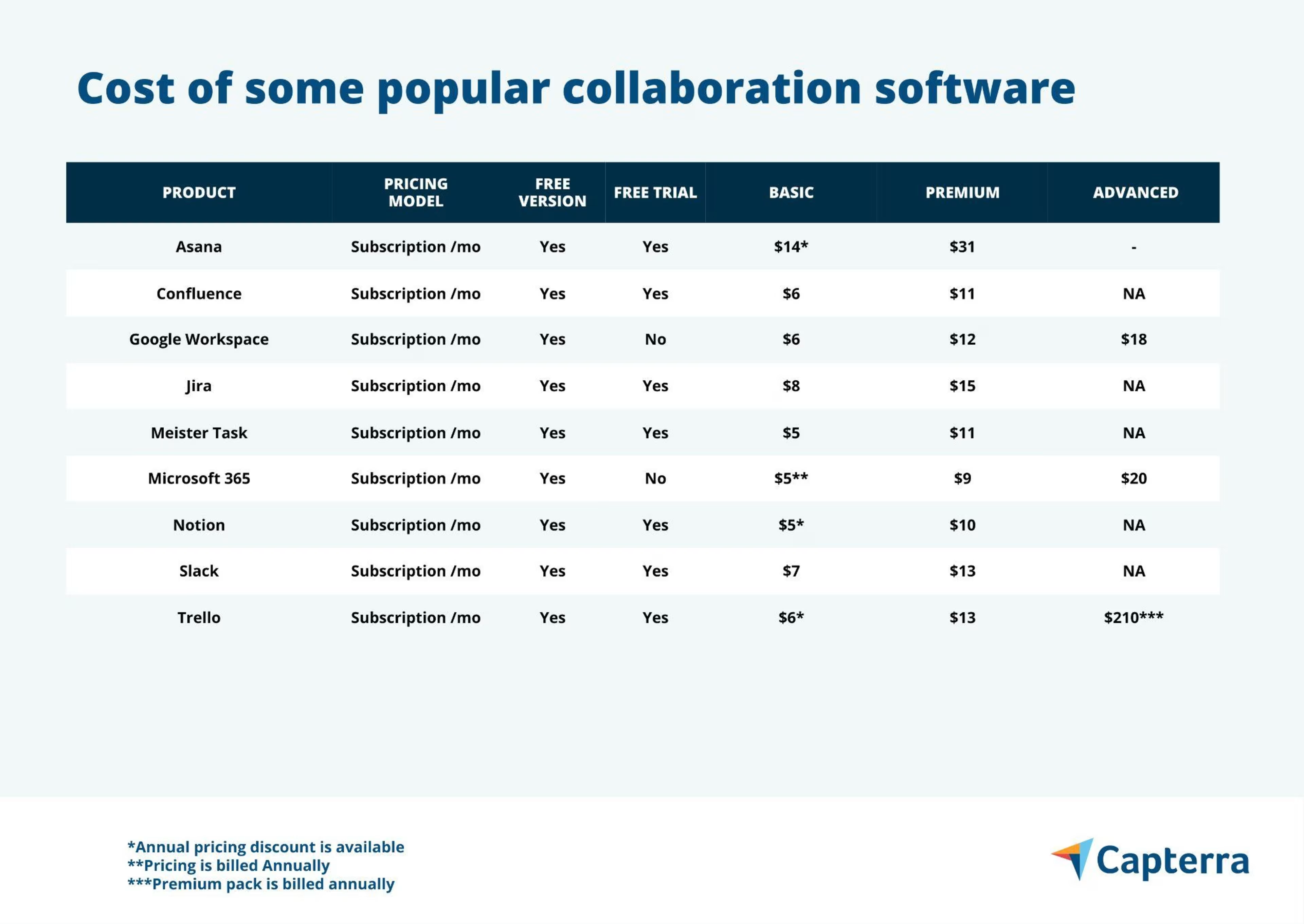
Only products with publicly available pricing information were included in this table. We summarized publicly available pricing sources, including vendor websites, as of Feb. 10, 2022, beginning with the lowest monthly pricing (not including annual discounts) for packages that include the core functionality for a software category. We list pricing for more advanced packages (per user, when available) that also include the core software feature(s). As always, your company’s specific needs may differ and final pricing will vary.
A note on features: Collaboration software enables the sharing of information by providing an online or intranet-based environment for virtual teamwork. The core or basic functionalities include communication tools and file sharing.
Project management software
What it is:
Project management software helps project managers and organizations execute projects—unique initiatives with a set scope, timeline, and resources. These tools help businesses plan, monitor, and control project costs, schedules, and resources so they can deliver value and meet project success criteria.
How much does project management software cost?
The cost of a project management software varies depending on several factors such as the number of users, deployment type, integrations, workspaces or project limits, and more. The cost starts as low as $5 per user, per month and can go as high as $1,500 per month. For more users and advanced functionalities, healthcare companies can expect to pay around $520 to $5,555+ per month.
We classify the different pricing plans as basic, premium, and advanced. The price for these three pricing ranges goes from lowest to highest.
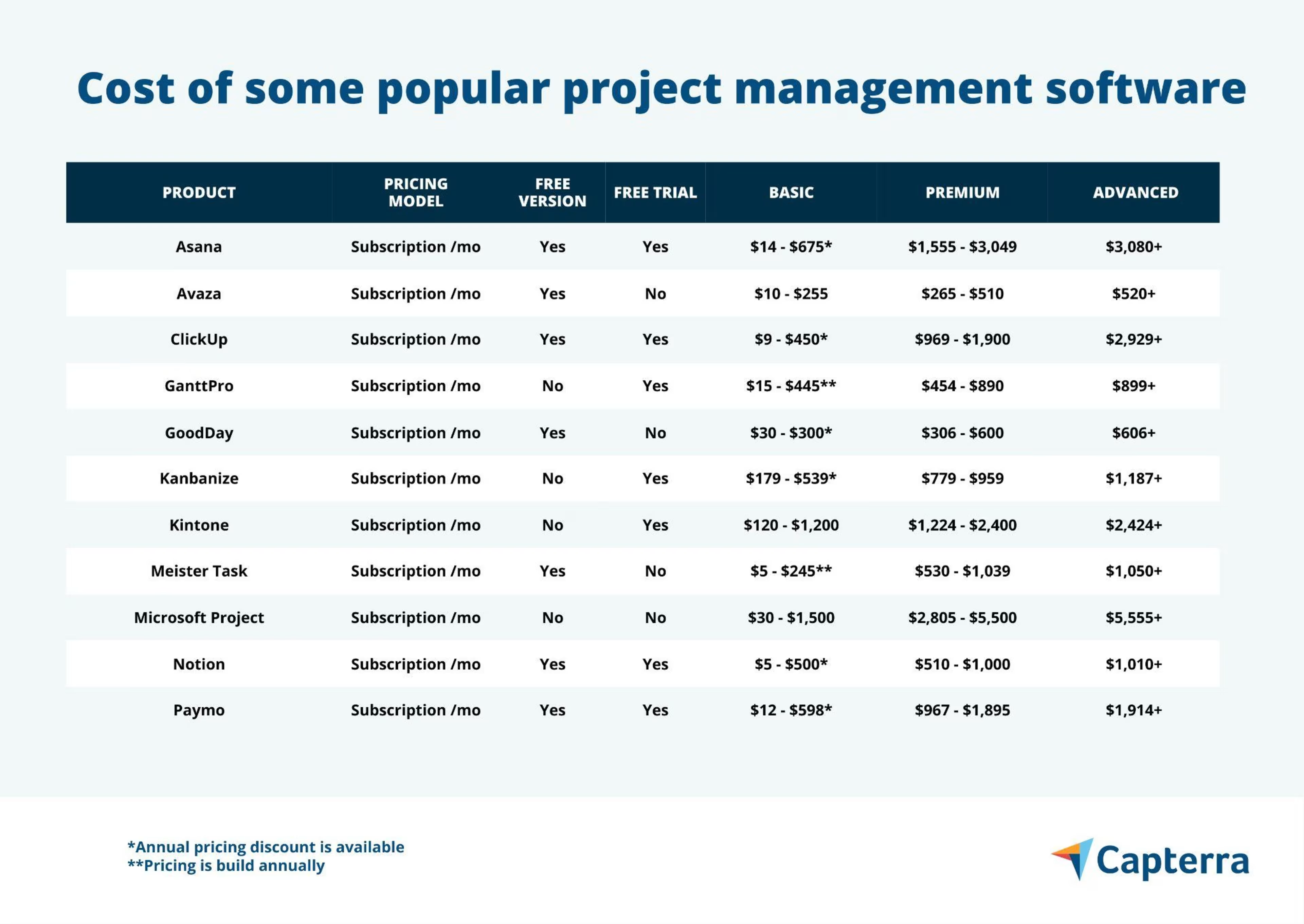
Only products with publicly available pricing information were included in this table. We summarized publicly available pricing sources, including vendor websites, as of Feb. 10, 2022, beginning with the lowest monthly pricing (not including annual discounts) for packages that include the core functionality for a software category. We list pricing for more advanced packages (per user, when available) that also include the core software feature(s). As always, your company’s specific needs may differ and final pricing will vary.
A note on features: Project management software as a category has evolved to encompass a range of solutions, from lighter task management tools to robust project management solutions. The core or basic functionalities include task management, collaboration, and project tracking.
Communication software
What it is:
Cloud communication platforms allow organizations to move their business communications and collaboration to the cloud by integrating real-time voice, video, and messaging capabilities into their business applications. It also allows users to exchange files and text, audio, and video messages via the cloud or local network from various devices. The most common tools are email, chat, and messaging apps.
How much does communication software cost?
These software applications can be broadly classified into three categories such as unified communication systems, web conferencing, and live chat. Therefore, basis each category, pricing differs as mentioned below:
Freemium and free plans
Subscription plans
Perpetual plans
Customized plans
The cost starts as low as $10 per user, per month and can go as high as $4,950 per month. For more users and advanced functionalities, companies can expect to pay anywhere from $999 to $19,900+ per month.
We classify the different pricing plans as basic, premium, and advanced. The price for these three pricing ranges goes from lowest to highest.
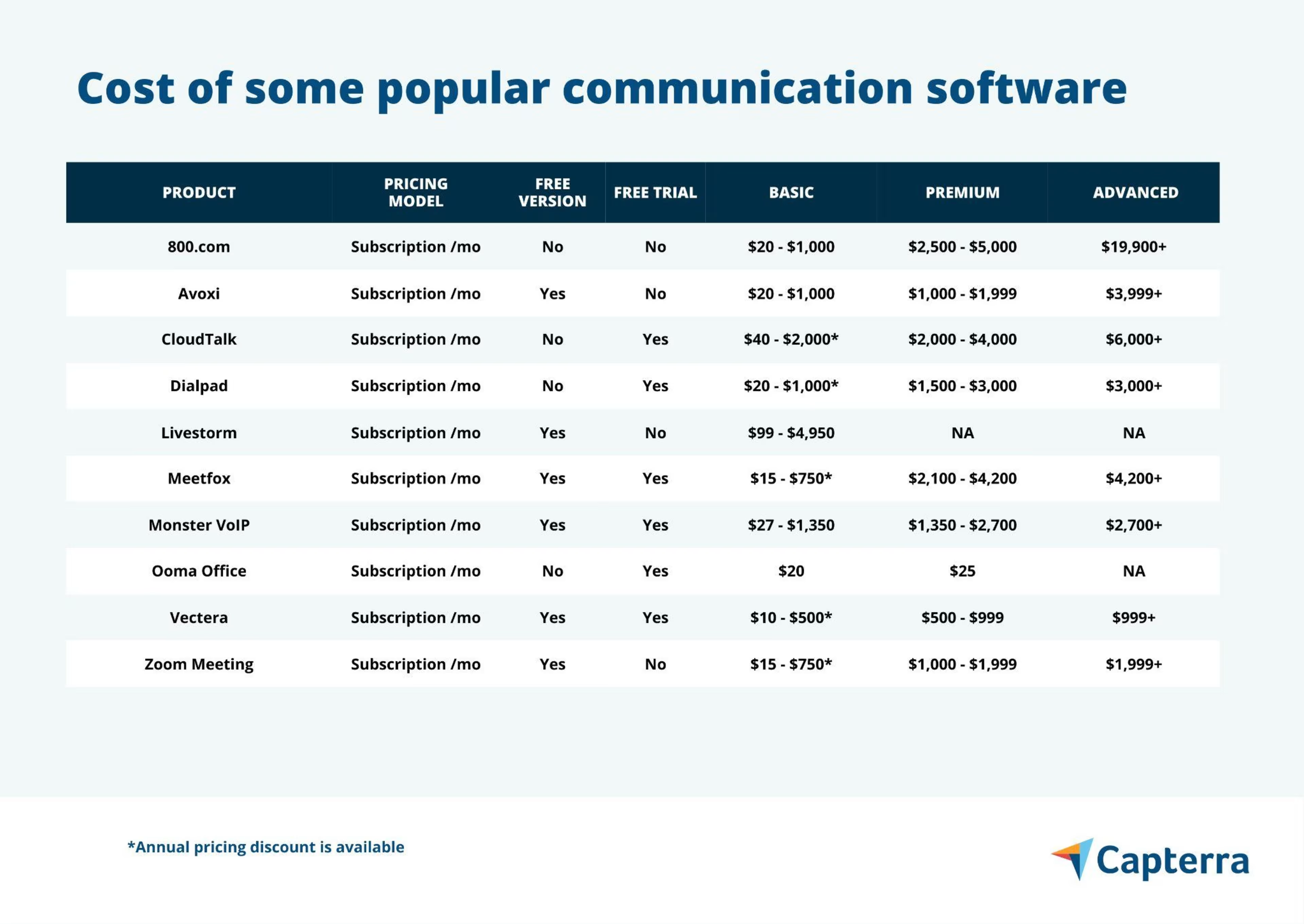
Only products with publicly available pricing information were included in this table. We summarized publicly available pricing sources, including vendor websites, as of Feb. 10, 2022, beginning with the lowest monthly pricing (not including annual discounts) for packages that include the core functionality for a software category. We list pricing for more advanced packages (per user, when available) that also include the core software feature(s). As always, your company’s specific needs may differ and final pricing will vary.
A note on features: Communication software enables voice and data transmission over the internet, which allows for enhanced employee mobility. This type of software provides extensive call reporting capabilities and often supports other functions, such as instant messaging and group conferencing, in addition to standard telephony features. The core or basic functionalities include online voice transmission and call conferencing.
CRM software
What it is:Customer relationship management (CRM) software helps automate and manage the customer life cycle for sales and marketing departments. CRM software consolidates customer information into one repository so that users can manage relationships better, automates common processes, and provides tools for monitoring performance and productivity.
How much does CRM software cost?
CRMs are generally priced per user, per month. In other words, you have to multiply the base cost of your CRM by the number of people on your team who will be using it to calculate your total monthly CRM investment.
The cost starts as low as $15 per user, per month and can go as high as $4,000 per month. For more users and advanced functionalities, healthcare companies can expect to pay anywhere from $6,275 to $20,078+ per month.
We classify the different pricing plans as basic, premium, and advanced. The price for these three pricing ranges goes from lowest to highest.
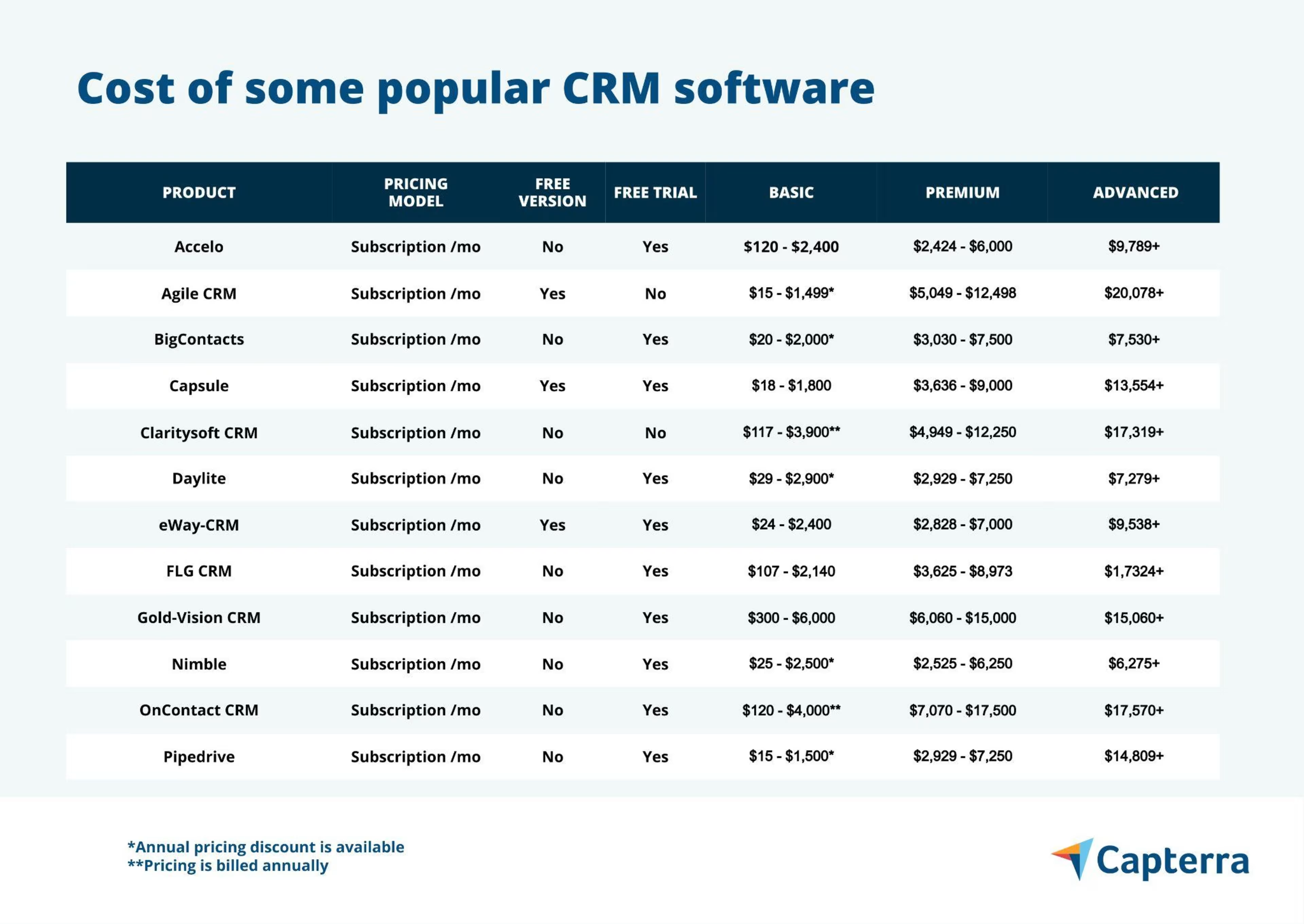
Only products with publicly available pricing information were included in this table. We summarized publicly available pricing sources, including vendor websites, as of Feb. 10, 2022, beginning with the lowest monthly pricing (not including annual discounts) for packages that include the core functionality for a software category. We list pricing for more advanced packages (per user, when available) that also include the core software feature(s). As always, your company’s specific needs may differ and final pricing will vary.
A note on features: The core or basic functionalities include contact management, lead management, and interaction tracking.
Additional fees to expect
Though several services are a part of the original subscription or licensing price, there are a few services that are offered at an additional fee. These extra expenses are universal, regardless of your chosen vendor’s pricing model, so make sure you’re factoring the following into your budget:
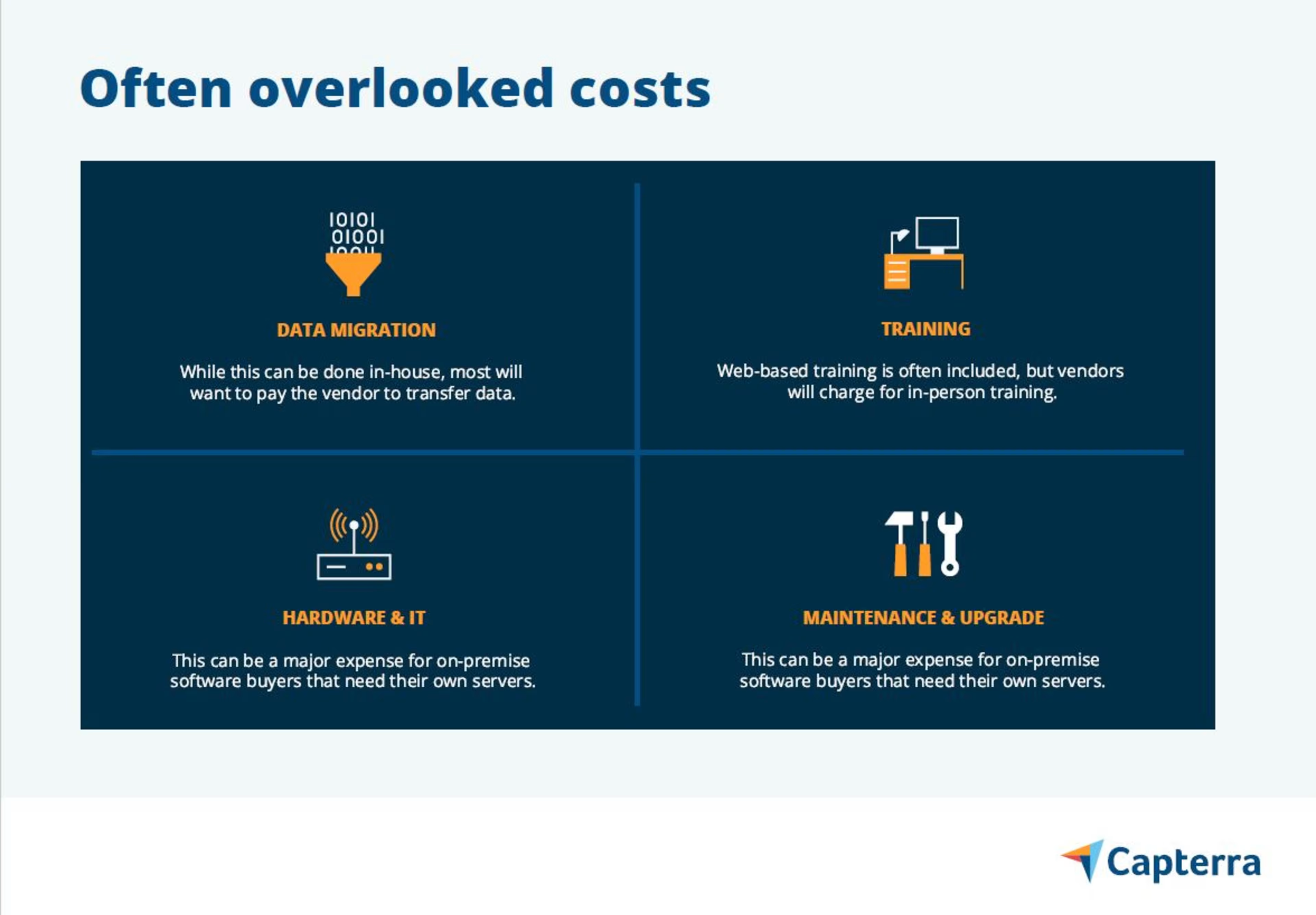
Data migration: Check if there’s any cost you need to pay when you transfer your client’s data between systems and further export it as files that can be imported into the other or new system.
Training: Ask your vendor about the price you’ll have to pay when the training is done on the client’s site based on your business needs.
Maintenance and upgrades: It is important to know what maintenance and support services are offered by your software vendor and whether they are included in your software subscription or licensing fees.
Hardware and IT: Is there any need to make additional purchases or enhancements to your existing infrastructure to implement the software? A common requirement might be the need to upgrade individual employee hardware, such as computers or mobile devices.
It’s important to take these often-overlooked costs into account before you begin evaluating vendors. This way, you can add them to your budget at the start.
What are the best small business software packages?
Do the different tools listed in this guide fall under your software budget? If yes, then you might as well compare their features and read real user reviews of more than 100 similar products listed on our category pages listed below.
NOTE: This article is intended to inform our readers about business-related concerns in the U.S. It is in no way intended to provide financial advice or to endorse a specific course of action. For advice on your specific situation, consult your accountant or financial consultant.
